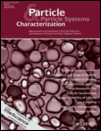
PARTICLE & PARTICLE SYSTEMS CHARACTERIZATION
Scope & Guideline
Unraveling the Mysteries of Particulate Systems
Introduction
Aims and Scopes
- Nanoparticle Synthesis and Characterization:
The journal covers a broad range of synthesis techniques including green synthesis, chemical methods, and physical methods to produce nanoparticles with tailored properties. Emphasis is placed on understanding the structural, optical, and electronic properties of these materials. - Application in Biomedical Fields:
Research articles frequently explore the use of nanoparticles in drug delivery systems, imaging agents, and therapeutic applications, highlighting their role in cancer therapy, antibacterial treatments, and targeted delivery. - Environmental Applications:
The journal also addresses the use of nanoparticles for environmental remediation, including water treatment and pollutant degradation, showcasing the potential of nanomaterials in addressing global environmental challenges. - Nanostructured Materials for Energy Applications:
Publications often focus on the development of nanostructured materials for energy-related applications such as batteries, supercapacitors, and photocatalysis, indicating a strong interest in sustainable energy solutions. - Interdisciplinary Research Approaches:
The journal encourages interdisciplinary research, combining insights from chemistry, physics, biology, and engineering to innovate and optimize particle systems for various applications.
Trending and Emerging
- Sustainable and Green Nanomaterials:
A significant trend is the increasing publication of research focused on the green synthesis of nanoparticles and their applications in sustainable practices, such as environmental remediation and biodegradable materials. - Nanomedicine and Targeted Therapies:
There is a marked increase in articles discussing the use of nanoparticles in targeted drug delivery systems and as therapeutic agents, particularly in cancer treatment, reflecting the growing interest in personalized medicine. - Smart and Responsive Nanoparticles:
Research on stimuli-responsive nanoparticles that can change their properties in response to environmental triggers (e.g., pH, temperature) is on the rise, showcasing advancements in smart materials for biomedical and environmental applications. - Integration of Nanotechnology with AI and Machine Learning:
The intersection of nanotechnology with artificial intelligence and machine learning is emerging as a significant area, focusing on data-driven approaches to optimize nanoparticle design and functionality in various applications. - Nanoparticle Interaction and Toxicology Studies:
There is an increasing emphasis on understanding the interactions of nanoparticles with biological systems and the environment, particularly regarding their safety, biodistribution, and long-term effects.
Declining or Waning
- Traditional Material Synthesis Methods:
There has been a noticeable decline in the focus on conventional synthesis methods for nanoparticles, as researchers increasingly adopt more innovative, sustainable, and efficient synthesis techniques. - Basic Characterization Techniques:
Papers centered on basic characterization techniques, such as simple microscopy or bulk property measurements, are becoming less common, with a trend toward more advanced techniques that provide deeper insights into nanoscale phenomena. - General Reviews on Nanoparticle Applications:
While reviews remain important, there has been a shift away from broad overviews of nanoparticle applications to more focused studies that address specific challenges and innovations in the field. - Single-Use Nanotechnology Solutions:
The emphasis on single-use applications of nanotechnology, particularly in packaging and disposables, is decreasing as sustainability becomes a priority, leading to a growing focus on recyclable and reusable nanomaterials.
Similar Journals
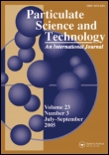
PARTICULATE SCIENCE AND TECHNOLOGY
Pioneering Knowledge in Particulate ScienceParticulate Science and Technology is a distinguished journal published by Taylor & Francis Inc, dedicated to advancing the understanding and application of particulate materials across various scientific fields. Serving the international community since 1983, this journal features original research, reviews, and technical notes that address key developments in chemical engineering, particularly focusing on the generation, processing, and application of particulate matter. With an impact factor that reflects its significant contributions within the discipline (Ranked Q2 in Chemical Engineering), the journal provides a vital platform for researchers, professionals, and students seeking to enhance their knowledge and influence in the field. While not currently open access, Particulate Science and Technology is committed to disseminating high-quality research that stimulates innovation and fosters collaboration amongst experts worldwide. For those invested in the advancement of chemical engineering principles, this journal is an invaluable resource.

Nanofabrication
Transforming Ideas into Nanofabrication InnovationsNanofabrication is a leading open-access journal dedicated to advancing the field of nanotechnology through innovative research and comprehensive reviews. Published by the Eurasia Academy Publishing Group (EAPG) since 2014, this journal aims to provide a platform for academic discourse, promoting the latest insights and findings in nanofabrication techniques and applications across diverse domains, including materials science, electronics, and drug delivery systems. With a commitment to accessibility, Nanofabrication ensures that all content is freely available to researchers, professionals, and students worldwide, thereby fostering collaboration and knowledge sharing in the rapidly evolving landscape of nanotechnology. The journal's emphasis on high-quality, peer-reviewed research positions it as an authoritative source for those looking to stay at the forefront of developments in the field.

Micro & Nano Letters
Pioneering research at the forefront of technology.Micro & Nano Letters is a prominent open-access journal published by WILEY, dedicated to advancing the fields of micro and nanoscale science and technology. Since its inception in 2007, the journal has been a valuable resource for researchers, professionals, and students, delivering high-quality research that supports innovation and collaboration in bioengineering, biomedical engineering, condensed matter physics, materials science, and nanoscience. With an impact factor that reflects its growing influence, Micro & Nano Letters has earned recognition in various Scopus categories, including a Q3 ranking in both Condensed Matter Physics and Materials Science as of 2023. Its commitment to open access, established in 2021, ensures that the latest developments in micro- and nanotechnologies are accessible to a global audience, fostering a multidisciplinary dialogue across academia and industry. The journal continues to play a critical role in disseminating cutting-edge research and promoting technological advancements worldwide.

Nano Futures
Unveiling Tomorrow's Technologies TodayNano Futures, published by IOP Publishing Ltd, is an influential journal dedicated to advancing the field of nanoscale science and technology, encompassing a wide range of disciplines such as Atomic and Molecular Physics, Bioengineering, and Materials Science. With a growing impact within the academic community, this journal has achieved a notable Q2 classification in categories like Chemistry and Electrical Engineering, making it a critical resource for researchers, professionals, and students seeking to explore innovative advancements in nanotechnology. Established in 2017 and operating through 2024, Nano Futures provides open access options for readers, ensuring wider dissemination and engagement with cutting-edge research findings. The journal's commitment to showcasing high-quality research makes it an essential channel for exploring the intersection of nanoscale innovations and practical applications in various industries.

Nanoscale Research Letters
Shaping the future through nanoscale discoveries.Nanoscale Research Letters, published by SPRINGER, is a leading open-access journal dedicated to the rapid dissemination of innovative research in the field of nanoscience and nanotechnology. Established in 2006, this journal provides researchers and professionals with a platform to share their groundbreaking findings across a broad spectrum of applications, including condensed matter physics and materials science. With an impressive Q1 ranking in both Condensed Matter Physics and Materials Science categories as of 2023, it asserts its position as a top-tier publication within the scientific community, bolstered by a 96th percentile rank in the Scopus database. Nanoscale Research Letters not only emphasizes the importance of nanotechnology research but also ensures that its findings are widely accessible, adhering to its open-access mandate. Scholars and students alike are encouraged to contribute to and engage with this dynamic resource, fostering collaboration and innovation in the ever-evolving world of nanoscience.

JOURNAL OF SOL-GEL SCIENCE AND TECHNOLOGY
Exploring the Synergy of Science and TechnologyJOURNAL OF SOL-GEL SCIENCE AND TECHNOLOGY, published by Springer, is a vital resource within the interdisciplinary fields of materials science and engineering, focusing on innovative research related to sol-gel processes and applications. With a rich publication history spanning from 1993, this journal enables the dissemination of cutting-edge findings in biomaterials, ceramics, and composites, ranking impressively across various categories—Q3 in Biomaterials and Q2 in several other materials-related fields. The journal's commitment to quality research is reflected in its Scopus rankings, particularly notable in the categories of Condensed Matter Physics and Materials Chemistry. Researchers and professionals leveraging the insights from this journal are supported through its comprehensive scope, which bridges theoretical foundations with practical applications, advancing knowledge and fostering collaboration among academics and industry leaders alike. As a non-open access journal, it is essential for subscribers and institutions to engage deeply with the latest advancements documented within its pages, underscoring the journal's role in shaping the future of sol-gel science and technology.

International Journal of Nanoscience
Exploring the Frontiers of Nanoscience InnovationThe International Journal of Nanoscience, published by WORLD SCIENTIFIC PUBL CO PTE LTD, stands as a significant platform in the multidisciplinary field of nanoscience and nanotechnology, offering a unique insight into innovative research developments and applications from 2004 to 2024. Based in Singapore, this journal provides an academic space for researchers, professionals, and students to explore the latest advancements across its wide-ranging scopes, which include bioengineering, biotechnology, computer science applications, condensed matter physics, electrical engineering, and materials science. While currently categorized in Q4 quartiles across multiple fields, the journal's commitment to quality research and scholarly discourse positions it as a pivotal resource for driving forward the understanding and application of nanoscience. Despite its non-open access format, the journal invites subscriptions from institutions and individuals eager to stay ahead in this rapidly evolving discipline. By fostering an environment of collaboration and innovation, the International Journal of Nanoscience aims to contribute significantly to the body of knowledge essential for future breakthroughs in science and technology.
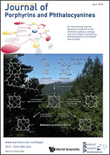
JOURNAL OF PORPHYRINS AND PHTHALOCYANINES
Catalyzing Knowledge in Porphyrin and Phthalocyanine StudiesJOURNAL OF PORPHYRINS AND PHTHALOCYANINES, published by WORLD SCIENTIFIC PUBL CO PTE LTD, is an influential peer-reviewed journal dedicated to advancing the field of porphyrins and phthalocyanines, key compounds in both chemistry and materials science. With an ISSN of 1088-4246 and an E-ISSN of 1099-1409, this journal has been a vital resource since its inception in 1997 and is expected to continue until 2024. The journal holds a respectable position in the academic landscape, categorized in the Q3 quartile for miscellaneous Chemistry journals and ranked #252 out of 408 in the general chemistry category according to Scopus, reflecting a growing impact in the field despite its current percentile standing at 38th. JOURNAL OF PORPHYRINS AND PHTHALOCYANINES seeks to publish original research articles, reviews, and critical studies that explore the synthesis, characterization, and applications of these versatile compounds, which play essential roles in numerous scientific disciplines, from catalysis to materials development. This journal is an indispensable platform for researchers and professionals seeking to disseminate their findings, engage with contemporary discussions, and stay informed about cutting-edge advancements in porphyrin and phthalocyanine research.
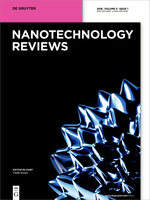
Nanotechnology Reviews
Bridging Disciplines through NanotechnologyNanotechnology Reviews, published by DE GRUYTER POLAND SP Z O O, stands at the forefront of the multidisciplinary field of nanoscience and nanotechnology. With an Open Access model adopted since 2019, this journal, identifiable by its ISSN 2191-9089 and E-ISSN 2191-9097, disseminates vital research that is accessible to a global audience. The journal is located in Germany and has established itself as a premier platform for innovative research, boasting impressive quartile rankings: Q1 across several categories including Biotechnology, Energy Engineering, and Materials Science, as well as a Q2 classification in Biomaterials as of 2023. The diverse scope enables authors to contribute to a range of topics, from biomedical applications to energy solutions and advanced materials, making it essential reading for researchers, professionals, and students passionate about cutting-edge developments. Additionally, with Scopus rankings highlighting its value across various domains and robust percentiles, including 94 in Engineering (miscellaneous), 93 in Medicine (miscellaneous), and 88 in Biotechnology, Nanotechnology Reviews is an influential and respected journal that fosters scientific dialogue and innovation.
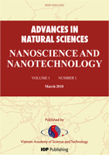
Advances in Natural Sciences-Nanoscience and Nanotechnology
Exploring the Frontiers of Nanoscience and TechnologyAdvances in Natural Sciences-Nanoscience and Nanotechnology is a premier academic journal published by IOP Publishing Ltd, dedicated to the dynamic and rapidly evolving field of nanoscience and nanotechnology. With an ISSN of 2043-6254 and E-ISSN 2043-6262, this journal encompasses a diverse spectrum of research encompassing both theoretical frameworks and applied technologies, bridging the gap between engineering, industrial practices, and materials science. Holding a reputable position within the Q3 quartile for Electrical and Electronic Engineering, Q2 in Industrial and Manufacturing Engineering, and Q3 in Materials Science, it ranks significantly due to its robust review process and quality of articles. With a convergence span from 2010 to 2024, the journal aims to foster an open dialogue among researchers and professionals, providing essential insights into cutting-edge advancements and interdisciplinary applications in nanotechnology. The open access policy enhances visibility and accessibility, ensuring that every article extends its reach beyond the confines of traditional scholarly communication. Situated in the United Kingdom, this journal not only bolsters the global discourse on nanoscience but also serves as a critical resource for those at the forefront of research and innovation.